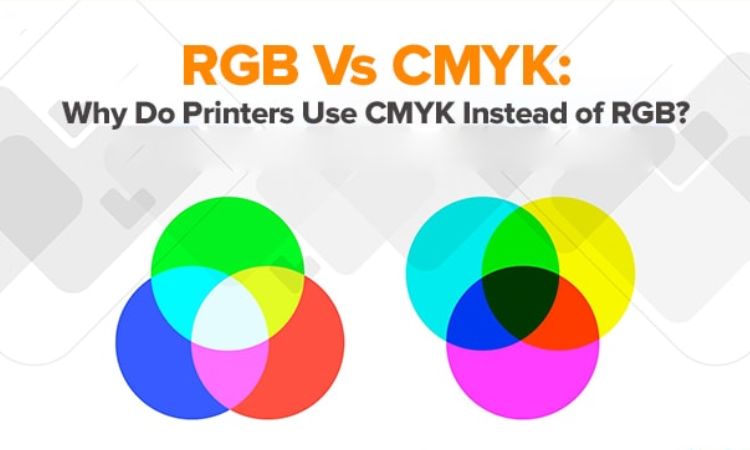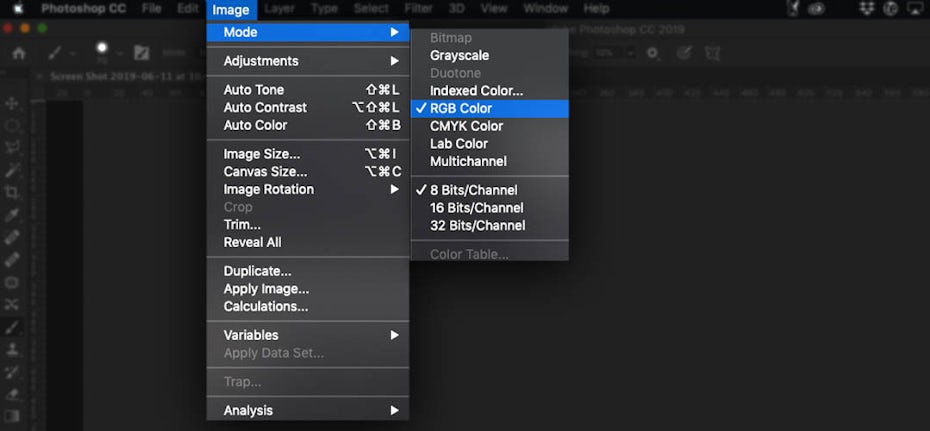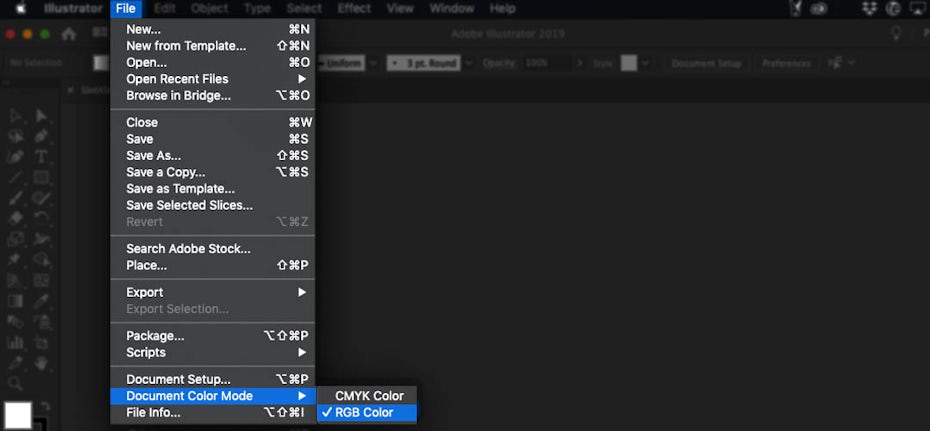Consider a color, any color, for a moment. It may be brilliant and colorful, or it could be dark and dull. You’ve most likely seen it before, either in a favorite film or on a fantastic poster in your office. When you combine enough colors, you’ll get a fantastic design. You’ve undoubtedly experimented with Photoshop if you’ve ever wanted to put that design on anything and sell it.
Whether you’re a designer or a client, knowing the difference between RGB and CMYK color modes is essential for planning and optimizing each stage of the design process. That goes beyond simply understanding what the letters stand for – spoiler alert: they’re largely colors to determining which one is ideal for your project.
One-color space is always superior to the other, depending on where and how the final product is exhibited. Never be afraid of these abbreviations again! We’ll go through what the RGB vs CMYK print on demand color modes are, how they function, and when to utilize them.
1. What is the basic difference between RGB vs CMYK print on demand?

When designing for Sellers who want to sell POD, the CMYK color system will be the best option. With the CMYK color system, the product design color will be the most comparable to the color when the product is printed.
Because it is assumed that you will be printing your product on white paper, the CMYK color will not contain white. White will be utilized to fill in the remaining spaces depending on the amount of each color in CMYK.
The RGB color scheme is ideal for designing digital displays on the screen, such as sales websites, brand logos, product pictures on websites, and so on. This color scheme works nicely with luminous gadgets that employ white light as a foundation.
Furthermore, the RGB color system produces brighter and more saturated colors than the CMYK color system.
Both RGB vs CMYK print on demand is color mixing modes used in graphic design. To summarize, the RGB color option is excellent for digital work, whereas CMYK is preferred for print items. However, in order to completely optimize your design, you must first grasp the mechanics underlying each. Let’s go a little deeper.
1.1 What is RGB Printing
Among RGB vs CMYK print on demand, The color space for digital photographs is RGB (Red, Green, and Blue). If your design will be displayed on any type of screen, choose the RGB color option. A light source within a gadget may produce any hue by combining red, green, and blue light and adjusting their intensity. All colors begin as black darkness, and then red, green, and blue light are put on top of each other to brighten it and make the perfect pigment. When red, green, and blue light are blended in equal amounts, they produce pure white.
Designers may adjust any of the three source colors to influence elements like saturation, brightness, and shadow. Because it is done digitally, the designer may alter how the light on the screen emerges in order to achieve the desired hue.
When to use RGB
Use the RGB color option if the final destination of your design project is a digital screen. This includes computers, cellphones, tablets, televisions, cameras, and other electronic devices.
If your design project includes the following elements, use RGB:
web & app design
- icons
- buttons
- graphics
branding
- online logos
- online ads
social media
- images for posts
- profile pictures
- profile backgrounds
visual content
- video
- digital graphics
- infographics
- photographs for website, social media, or apps
Best file formats for RGB
JPEGs are suitable for RGB data because they are a good compromise between file size and quality, and they can be read practically anywhere. If everyone in the team is using Adobe Photoshop, is the usual source file for RGB vs CMYK print on demand documents.
PNGs provide transparency and are ideal for visuals that must be placed on top of others. Consider using this file type for interface components such as buttons, icons, or banners.
GIFs record motion, so if you’re utilizing an animated element, such as a bouncing logo or a moving logo, this file format is great.
For RGB purposes, TIFF, EPS, PDF, and BMP should be avoided. Most software does not support these formats, and they might be needlessly huge in terms of data.
1.2 What is CMYK Printing
The color space for printed items is CMYK (Cyan, Magenta, Yellow, Key/Black) among RGB vs CMYK print on demand.
Images are created by blending CMYK colors to varying degrees with real ink in a printing machine. This is referred to as subtractive mixing. All colors begin as white, and each layer of ink diminishes the original brightness to get the desired color. When all hues are combined, they become absolute black.
When to use CMYK
Use CMYK for any project design that will be printed rather than seen on a screen – RGB vs CMYK print on demand. If you need to reproduce your design with ink or paint, the CMYK color option will produce more precise results.
If your project includes the following elements, use CMYK:
Branding
- business cards
- stationary
- stickers
- signs & storefronts
Advertising
- billboards
- posters
- flyers
- vehicle wraps
- brochures
Merchandise
- t-shirts, hats, and other branded clothing
- promotional swag (pens, mugs, etc.)
Essential materials
- product packaging
- restaurant menus
Best file formats for CMYK
Because they are compatible with the majority of systems – RGB vs CMYK print on demand, PDFs are great for CMYK files. If everyone on the team is using Adobe Illustrator, AI is the typical source file for CMYK.
Because it is compatible with other vector applications, EPS might be a suitable source file alternative to AI. All things considered, it’s usually a good idea to check with your printer ahead of time to find out which file type they prefer.
2. Setting CMYK & RGB Printing on Print on demand
The RGB color system is a popular color scheme for website and online logo design. CMYK, on the other hand, is the color scheme utilized for printing on all sorts of printers RGB vs CMYK print on demand products.
To some degree, sellers are still accustomed to utilizing the RGB color system in the design file, therefore there have been reports of completed items having color discrepancies after printing owing to the varied color systems in the design file and different printers.
We suggest that sellers utilize the CMYK color system when creating and delivering files instead of RGB to avoid the product being printed with the incorrect color compared to the design file, particularly for color bands that are not in the CMYK color system. We shall not be held liable if the completed product is pale in color in comparison to the design owing to the artwork being created utilizing the RGB color standard.
It has prepared an overview of two-color systems, CMYK and RGB, in this blog so that everyone understands and uses the right color system when uploading design files. The article will also show you how to transform color schemes into design files in the simplest and smoothest method possible.
3. Guide How to Send Print on Demand Design with CMYK Format by Folder JPG & PNG for printing
When you start a new Photoshop page, you may configure the color scheme that you wish to use.
The design file uses the CMYK color scheme and may only be saved as a JPG. If you wish to save a design with the CMYK color system as a PNG file, you must first change the color system from CMYK to RGB – RGB vs CMYK print on demand, after which your design file will be saved as a PNG file.
The CMYK color system is the most common color system used by all modern printers and will generate the closest color to the design file, avoiding the danger of the completed product being excessively colorful when printing using the RGB color system.
4. How to check whether your file is in RGB or CMYK mode
Here’s how to verify the color mode if you can’t remember what mode you set your document to or if you’re working with someone else’s file – RGB vs CMYK print on demand.
4.1 In Photoshop

The color mode in Photoshop is displayed in parentheses in the document’s tab. You may also access it by going to Image > Mode. A checkmark will appear next to the color mode of the page.
4.2 In Illustrator

The color mode in Illustrator is given in parentheses in the document’s tab. You may also get there by going to File > Document Color Mode. A checkmark will appear next to the color mode of the page.
4.3 in InDesign

The Color panel in InDesign provides a quick method to verify the color mode. To access the Color panel, go to Window > Color > Color if it isn’t currently open. Colors will be measured in specific percentages of CMYK or RGB – RGB vs CMYK print on demand, depending on the color mode of your document.
5. How to convert between RGB and CMYK
“Well, this essay would have come in helpful when I initially started the project!” some of you may be thinking. Don’t give up. Yes, it is critical to begin a project in the right format, however, it is still feasible to convert between RGB vs CMYK print on demand if necessary.
Expect the colors to seem different (darker or lighter due to additive or subtractive mixing). You will need to explain this to your customer if you are a designer. In addition to modifying the color space of the document, you may need to adjust the colors themselves to get a close match to what you had previously.
This tutorial will show you how to use design software to convert between RGB vs CMYK print on demand color modes.
5.1 In Photoshop
Navigate to Edit > Convert to Profile to alter the color mode of your Photoshop project. This will open a conversation window. What you want to focus on is the Destination Space field. Select your preferred color mode from the dropdown menu.
Because there are numerous libraries of RGB vs CMYK print on demand colors, you will see a variety of alternatives. The first two selections are enough for most applications, but you should verify with your printer ahead of time to ensure that they have what they want.
If your picture hasn’t previously been flattened, click the Flatten Image to Preserve Appearance option, as your colors might not show up as well in numerous layers with blending/transparency between them. When you’re finished, click OK, and you’ll see that the color mode information on the tab at the top of your document has changed.
5.2 In Illustrator
To change the color mode of your Illustrator file, select all of its objects. Select your preferred color space by going to Edit > Edit Colors.
5.3 in InDesign
During the export process, you can alter the color mode of your InDesign document. Select a save location by going to File > Adobe PDF Presets > [Press Quality]. Select Output on the left side of the Export Adobe PDF popup box, and then use the Destination dropdown menu in the Color section to select your chosen color option.
This approach can be useful in a hurry, but if you’re dealing with a number of different photos, it’s preferable to alter the color mode of the images using their respective tools (like Photoshop or Illustrator), providing you’ve connected them.
Conclusion
Temperature, humidity, printer settings, color system, and the unavoidable tiny color departure all have an impact on the printing of POD items. However, if you want the design file and the printed product to be the same color, you might use the CMYK color system in the design file to prevent the circumstance where the printed color is not the same as the design color.
Knowing how colors interact to define a pigment may offer you more control over how the final color appears, and hence more influence over your final design – RGB vs CMYK print on demand. The more you work in a certain color mode, the better you’ll become at forecasting how a design file will transfer to an end product. That’s why, if you want picture-perfect colors every time, hiring a professional designer is a good idea.





